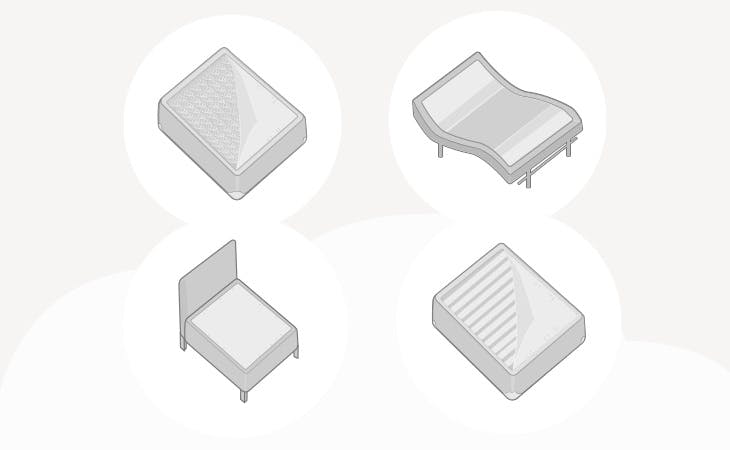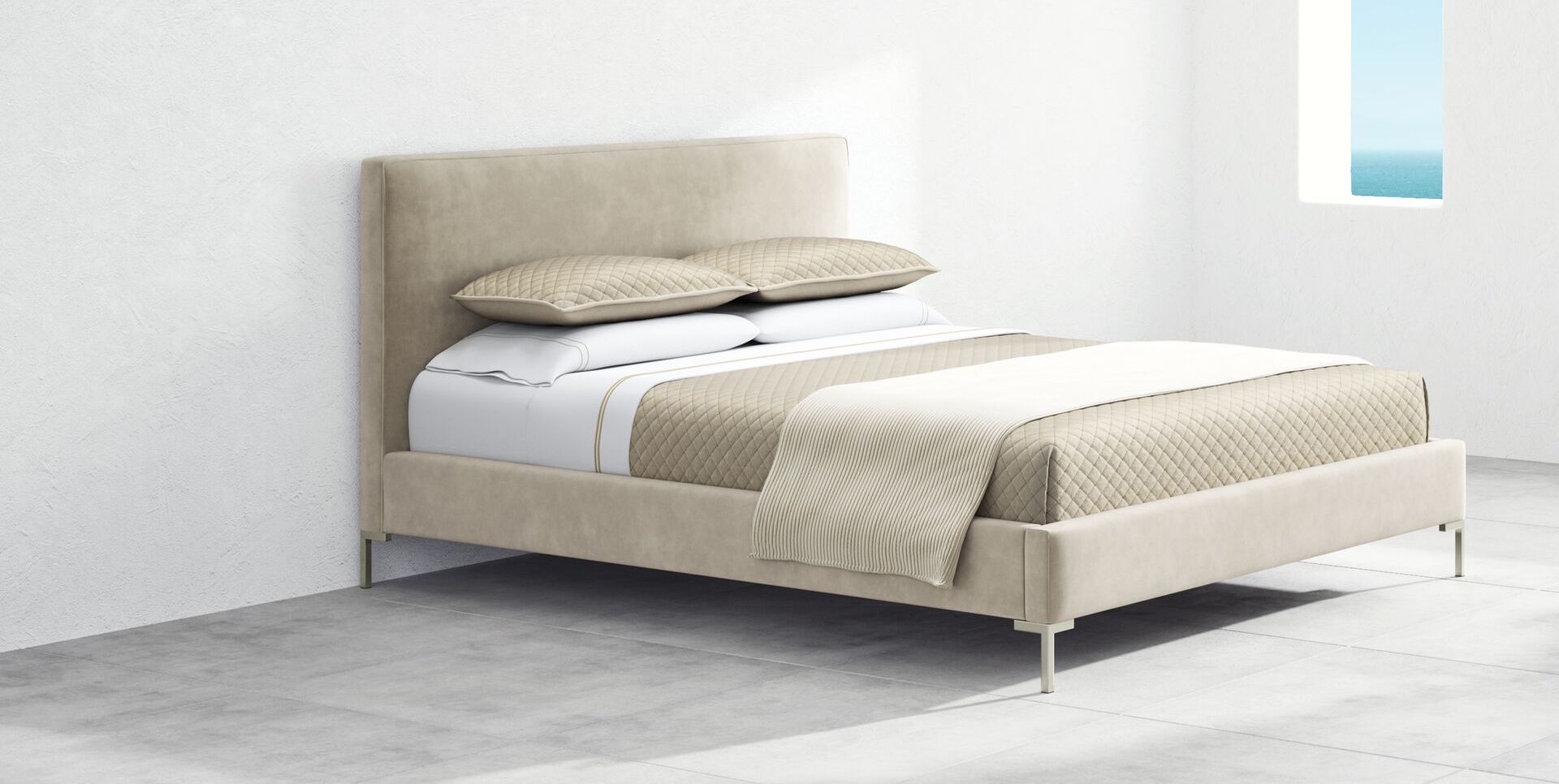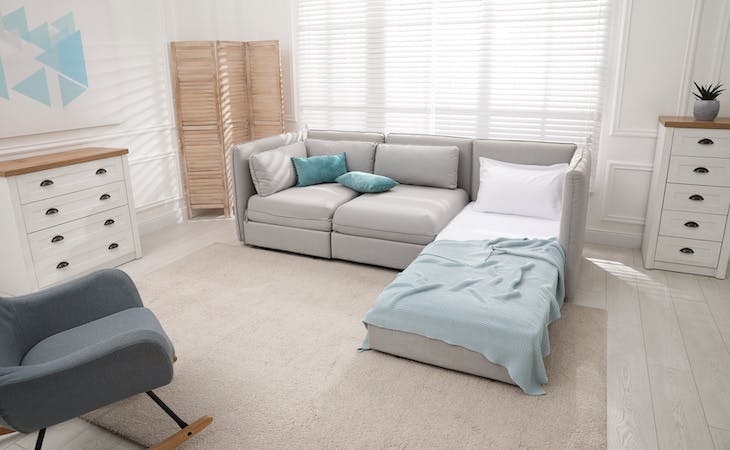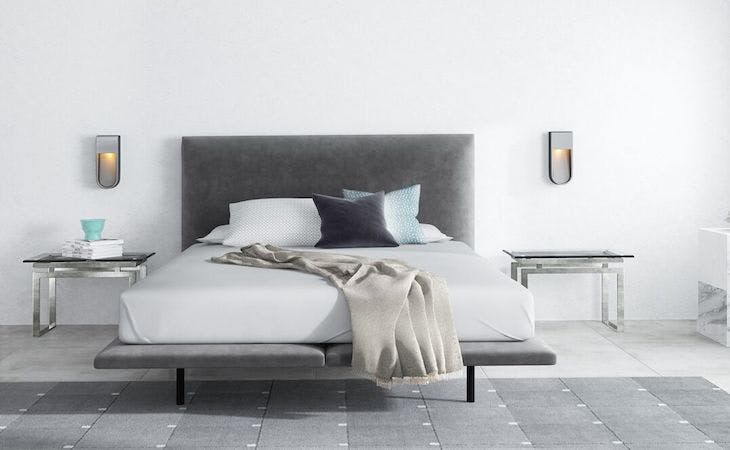If you’re in the market for a new mattress, you have a lot of decisions to make. Besides choosing the mattress type and the right firmness level for you, you have to decide which type of mattress base is best for you. (If you think you can postpone this decision, think again: Keeping your mattress on an inappropriate base will significantly decrease both its lifespan and your sleep quality).
Traditional box springs and foundations are two of the most common options you’ll come across. Both can offer adequate support for a mattress, but there are some essential differences between the two worth keeping in mind.
We’ve put together this guide to box springs and foundations to help make mattress shopping easier for you. Learn about the pros and cons of box springs and foundations, the differences between the two, and other popular bed bases you should consider.
What is a box spring?
A box spring is a rectangular wooden box that your mattress sits on top of. A box spring is filled with metal coils (hence the name), and its sides are covered with fabric.
The purpose of a box spring is to provide proper support and additional cushioning to an

America’s best-selling online luxury innerspring
while raising it higher above the ground.
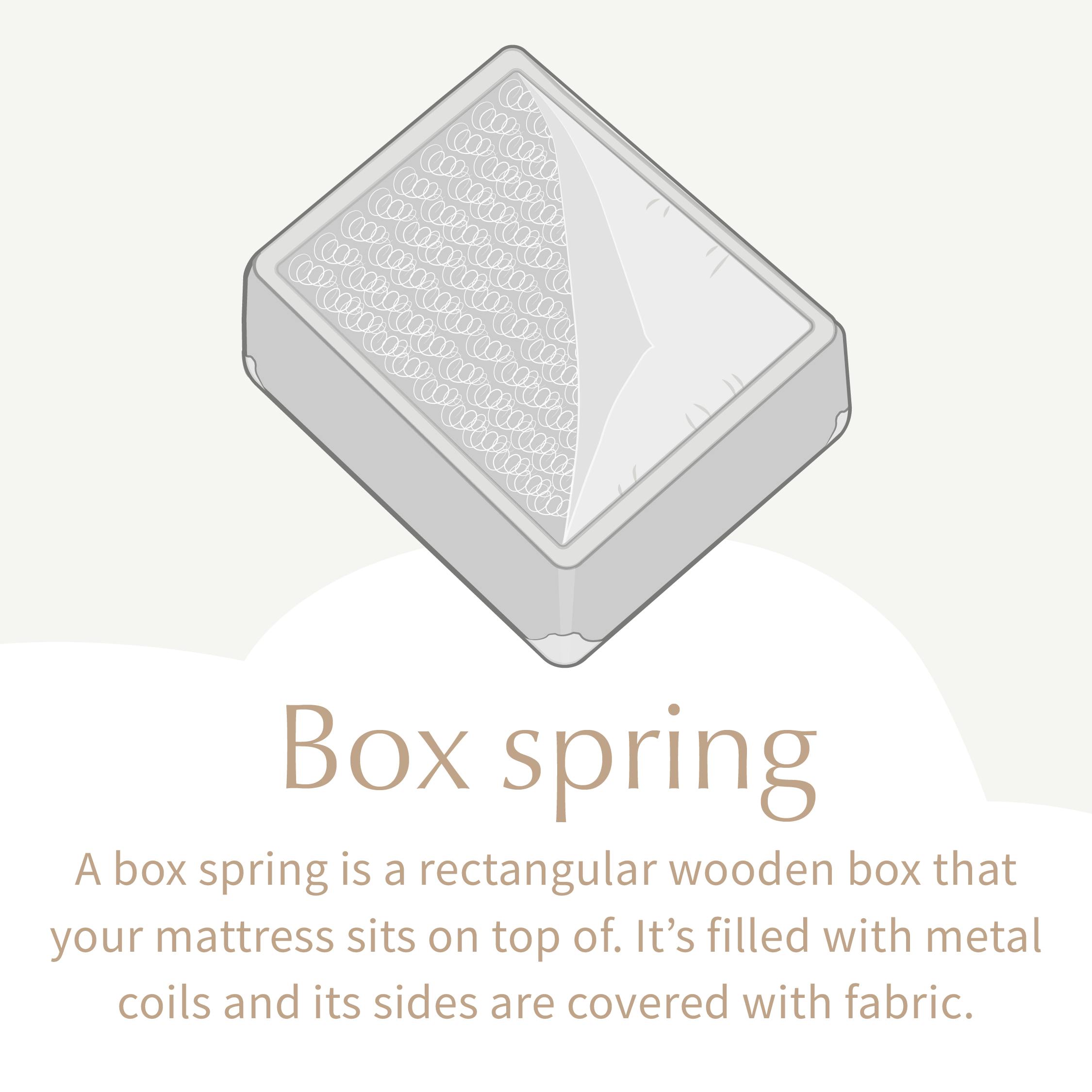
Coils in the box spring also promote better airflow and act as shock absorbers, reducing motion transfer. While a box spring works well when paired with a traditional innerspring mattress, keep in mind it won’t provide adequate support to a heavier memory foam or latex mattress. Those types of mattresses can break the coils, leading to eventual sagging.
Check out our innerspring mattress guide to learn more about choosing the right base for this mattress type.
What is a foundation?
A foundation is a wooden box with wooden slats on top (usually spaced 2-3 inches apart). It’s typically covered by a breathable cloth such as organic cotton.
Unlike a box spring, a foundation doesn’t contain coils, as its primary purpose is to provide support rather than additional cushioning. A foundation provides firm support, which could result in your mattress feeling slightly firmer. The lack of coils also means a foundation won’t have a ton of give.
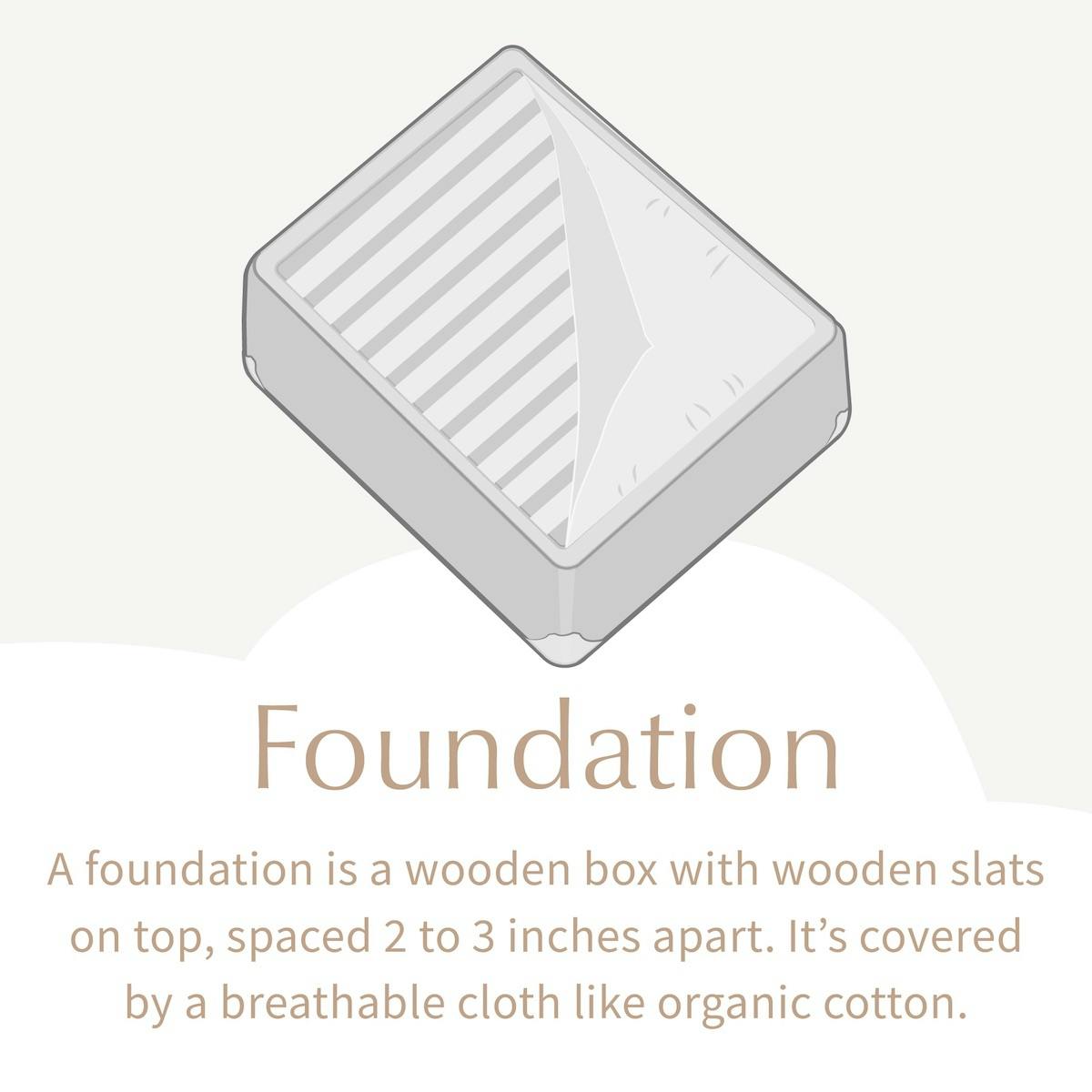
Another important point to note? The coils inside a box spring can be prone to breaking, which means that a foundation is typically a more durable option.
Key differences between a box spring and a foundation
Both box springs and foundations raise your mattress to a comfortable level and can be good bed bases for your mattress, depending on your mattress type. Here are some essential differences to keep in mind when making your choice:
Comparison Box spring Foundation Support Provides support for your mattress while adding some give Provides sturdy support for your mattress without any give Durability Coils may break over time, significantly decreasing support Extremely durable, the same support for years to come Weight Typically lighter than a foundation Heavy, makes transportation difficult Mattress compatibility Best suited to innerspring mattresses, not compatible with other mattress types Compatible with all mattress types Average price (queen) $100-$300 $200-$500
Pros and cons of a foundation
A foundation is compatible with all mattress types, even heavier ones like memory foam or latex (always check with your manufacturer first). It should provide adequate support to your mattress for years to come without the danger of sagging.
Here are the main benefits and drawbacks that come with a mattress foundation.
Pros of a foundation Cons of a foundation Provides strong support for a mattress Can be heavy Extremely durable Might lack give Compatible with most mattress types, even heavier ones Might make a thinner mattress feel firmer
Pros and cons of a box spring
Both box springs and foundations raise your mattress to a comfortable level and can be great mattress support, depending on your mattress type. Here are some pros and cons to keep in mind when making your choice.
Pros of a box spring Cons of a box spring Provides support for thinner innerspring mattresses Can be noisy because of the coils Reduces motion transfer from innerspring mattresses Isn’t compatible with memory foam or latex mattresses Promotes better airflow for cooler sleep Coils may break down over time, leading to sagging
What happens if you use a bed base that is incompatible with your mattress?
Pairing your new mattress with the right bed base can extend both its comfortability and lifespan. If you invest in a hybrid, latex foam, or memory foam mattress, which are designed to contour to your body specifically, a mismatched bed base can greatly diminish the value you get from your mattress.
Box springs, for instance, are typically not designed to withstand a mattress as heavy as memory foam, and using them together can cause sagging in the mattress, then back pain for you.
To be completely sure your bed base and mattress are compatible, check with your mattress manufacturer.
Other types of bed bases
Besides the foundation and box spring, there are a few other popular types of bed bases to consider when shopping for your next mattress.
Adjustable bed bases
An
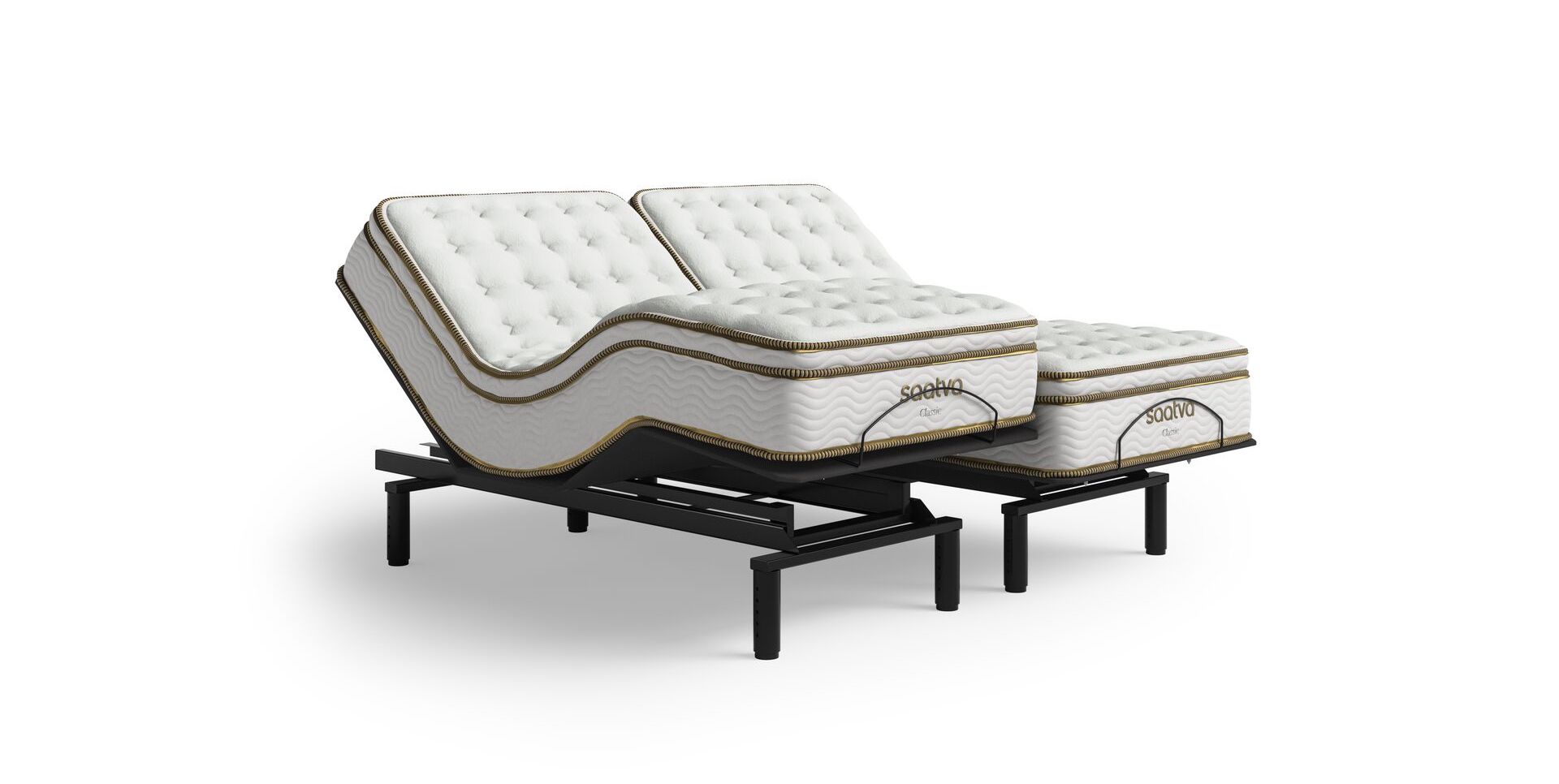
Our deluxe adjustable base with even more customized comfort options
is a bed base whose position can be adjusted to provide optimal support for your body. Specifically, the top and the bottom of the bed can be raised or lowered to keep your head and feet at a perfect angle.

An adjustable base is usually sleek and sophisticated and may include additional features such as several massage settings, remote-controlled under-bed lighting, a silent alarm, and voice control options.
Divan bed bases
A divan bed base is typically a sturdy, solid wooden frame covered with fabric. There are two main types of divan beds—platform top and sprung top. Platform top divan beds are typically firmer, usually designed with a solid surface and padded topper. Sprung top divan beds feature metal springs and have a softer, more flexible feel.
Divans are very customizable—you can easily add headboards, footboards, and drawers for extra storage.
Platform bed bases
With a platform bed frame, the mattress rests directly on the platform, whose top can be either a solid foundation or a slatted foundation. A platform bed can be wooden, metal, or upholstered and often comes with storage options.
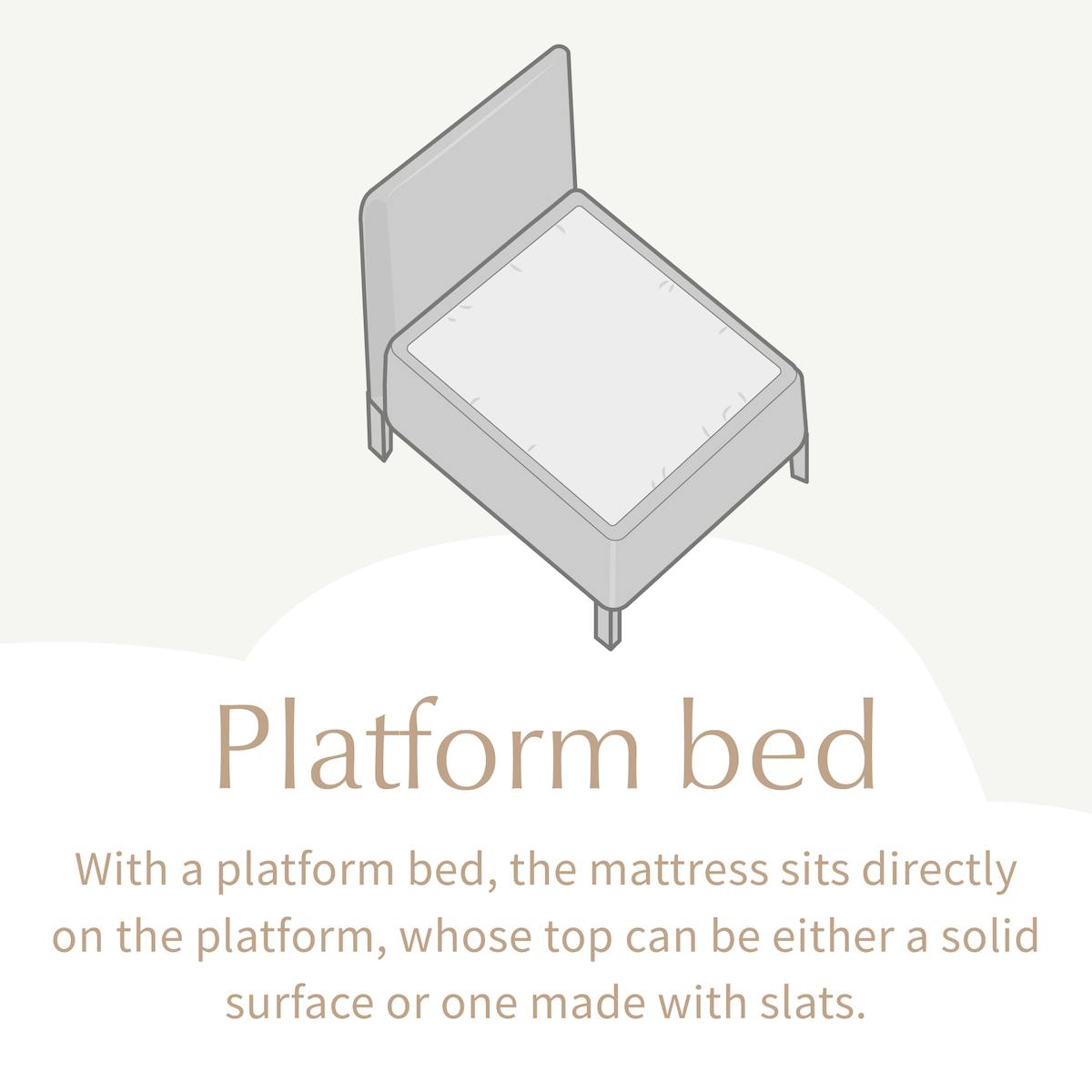
A platform bed varies in height but usually sits closer to the floor than a foundation or a box spring.
Low-profile bed bases
A low-profile bed base typically has a simple, minimal structure, designed not to draw too much attention. It sits lower than bed frames of standard height, about 7.5″, so you may want to pair it with a thinner box spring so it stays low to the ground.
Box spring and foundation FAQs
Do you need a box spring—and how long will it last? We’ve got answers to your most common box spring and foundation questions.
Do you need a box spring?
Most mattresses today don’t need a box spring. You may need a box spring if you have a traditional innerspring mattress and want to have some cushion as well as support or if your mattress warranty requires the use of a specific type of box spring. Always check the fine print to see if your mattress needs a box spring to be covered under the warranty.
Do you need a box spring with a bed frame?
If you’re using a standard metal bed frame—or any bed that provides only a rim around the perimeter to hold the mattress, perhaps with a few cross pieces of wood, that won’t provide adequate support for your mattress on its own. To ensure your mattress has the necessary support, as well as to raise it higher, you have to use either a box spring or a foundation.
Do platform bases need box springs?
Platform beds are designed to support the mattress on their own and don’t need a box spring or a foundation.
How long do box springs last?
A box spring that is used with a compatible mattress (i.e., a thinner innerspring mattress) may be able to last around seven years. That’s roughly the same lifespan as the average mattress. It’s a good idea to replace your box spring when you replace your mattress to ensure adequate support.
How do you cover a box spring?
You can make a new box spring cover using a fitted bed sheet or flat sheets and some upholstery pins. Choose a sheet in the same color as the ones on your bed for a streamlined look.
What is a bunkie board?
A bunkie board is a flat piece of plywood or particleboard about 1-3 inches thick that goes between your mattress and the surface it sits on. It can be used with any type of bed base—a box spring, foundation, platform bed, and so on—to provide additional support for the mattress when needed.
How much do Saatva foundations cost?
Saatva offers a handcrafted
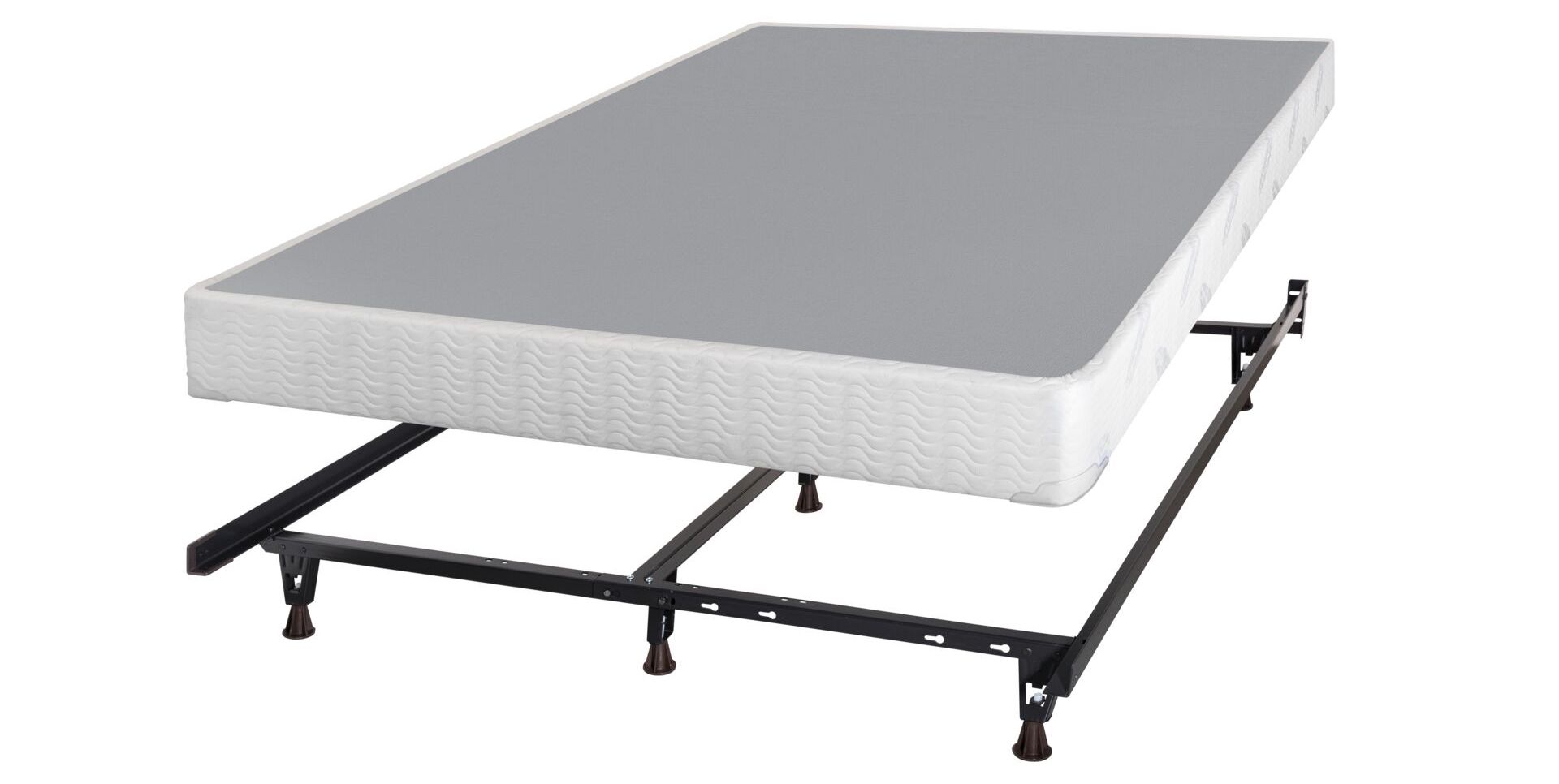
Better than a box spring, our foundation adds optimal support & durability
for all mattress sizes at the following prices:
- Twin: $215
- Twin XL: $215
- Full: $295
- Queen: $345
- Split Queen: $365
- King / Split King: $430
- Cal King / Split Cal King: $430
Which bed base is best for you?
In short, unless you have an innerspring mattress and/or your manufacturer requires the use of a box spring, a foundation is a versatile and durable option suitable for most mattress types and preferences.
Still not sure which type of bed base is right for you? We put together the following guides to help make your decision easier:
- The Definitive Guide to Adjustable Bases
- Adjustable Base vs. Box Spring: What’s the Difference?
- Platform Beds: A Buyer’s Guide
- Platform Bed vs. Box Spring: What’s the Difference?





